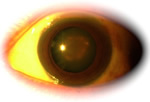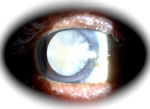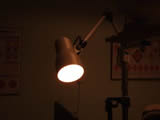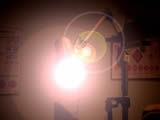Back to Cataract Menu


ACS Eye Specialist Centre
95G & 97G Jalan TKS 1,
Taman Kajang Sentral,
43000 Kajang,
Selangor, Malaysia.
Tel: 03-82116078
Waze or Google Map
Cataract
A treatable eye disease
If you have some of the following symptoms, it may be due to cataract eye disease.
Normal Eye
Cataract Symptoms
Vision becomes blurred
Spectacles may temporarily help, but not permanently.
Cataract facts
If spectacles do not reduce blurring, the only option is to remove the cataract and replace it with a clear artificial lens for improved vision.
Are there any risks? Advanced cataract surgery compared to older methods has very high success rates and few complications.
Advanced Cataract Surgery removal techniques normally allows:
- Quick surgery - less than 30 minutes.
- Day care surgery - less than 2 hours at surgical centre.
- Good visual outcome with fast visual improvement.
- Fast resumption to normal activities.
- No discomfort or only minimal discomfort during and after surgery.
- No stitches or eye patching needed.
- Reduced astigmatism.
- Surgery to be done without waiting for cataract to be mature. (Delaying removal of a mature cataract will increase the risk of the surgery.)
- Choice of a variety of your artificial lenses, i.e. monofocal, aspheric, multifocal.
With the advent of Advanced Cataract Surgery in our modern age, you can enjoy a better quality of life with improved vision.
*** This information is designed for public information & education only. For further information and to make any medical decisions a qualified ophthalmologist (Eye Doctor) should be consulted.
Back to Cataract Menu






